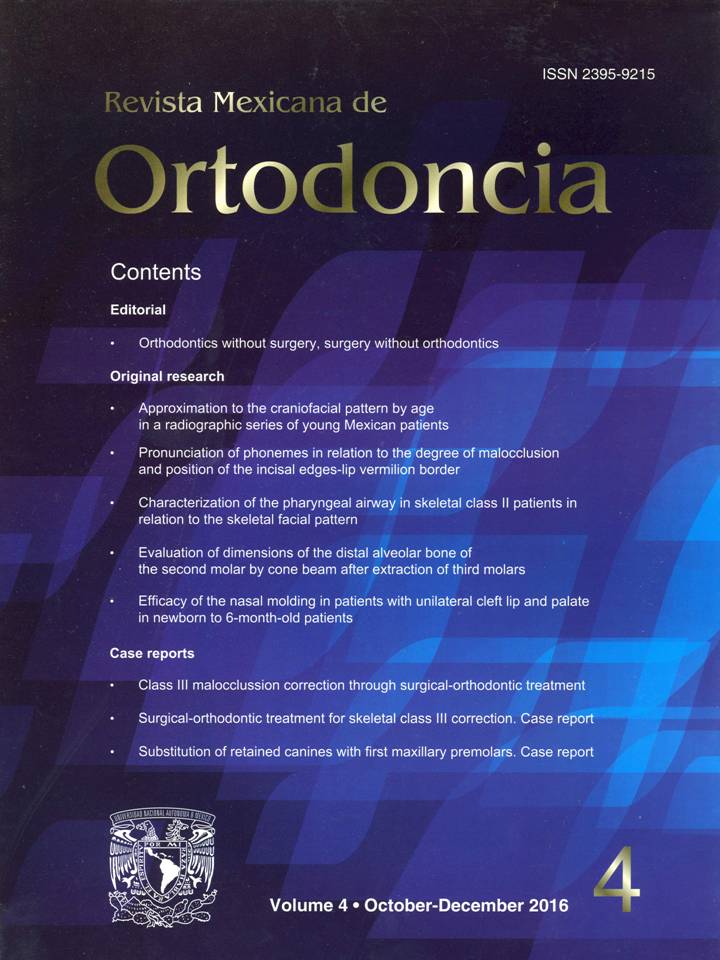Substitution of retained canines with first maxillary premolars. Case report
Contenido principal del artículo
Resumen
Introduction: Retained teeth are defined as non-erupted, wellformed, teeth that remain inside the jawbone. Third molars as well as upper canines are the most frequently retained teeth, athough lower second premolars and supernumerary teeth are also prone to suffer retention. Objectives: To replace retained canines with first maxillary premolars by using the labial cuspid of the first maxillary
premolars as canine guidance and class I molar relationship
coupled to a suitable anterior guidance. Case report: A 16 year-old male patient with bilateral molar class III, primary maxillary canines and upper and lower anterior crowding: the radiographs show two supernumerary teeth between the lateral incisors and the first upper premolars and the impaction of the permanent maxillary canines over the upper central incisors roots, with resorption of a third of the upper right central incisor root and of the apical third of the lateral incisor in the same side, as well as the central and lateral in the opposite side. Conclusions: The replacement of the canines by premolars, excluding the orthodontic surgery, is a viable treatment with good functional, periodontal and esthetic results, as long as there is a good orthodontic management of the final position of the anterior teeth. Nevertheless, it’s not a choiceforall cases.
